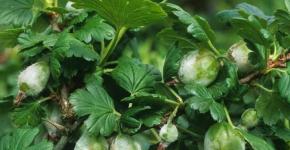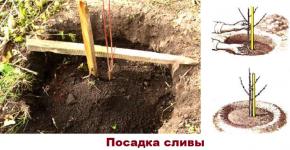How conifers are used in landscape design
Today, we will talk about how conifers are used in landscape design. coniferous plants- these are shrubs that have needles instead of leaves, and seeds develop in cones. There are rare exceptions when leaves form on the branches, and the seeds ripen not in cones, but in cone-berries. Coniferous plants are used in industry for timber harvesting, construction and paper production. The needles of plants are used in cosmetology, as well as in medicine. Many coniferous plants are relict, scientists have found that they grew on Earth 300 million years ago.
They play a big role coniferous plants in landscape design and landscaping. Most often, these plants do not require special care and take root well. Today there are about 650 species of these plants. The most popular conifers are: pine, larch, cypress, yew, juniper, hemlock, thuja, spruce, cedar, cypress, fir, metasequoia, pseudo-hemlock, microbiota. Many nurseries offer that will decorate every garden.
Coniferous trees can live for more than 4000 years, it's even hard to believe. The oldest coniferous tree is the long-lived pine, which is 4700 years old. The tallest tree is the sequoia - 115.2 meters, and the widest is the Mexican taxodium, its trunk diameter is 11.42 meters.
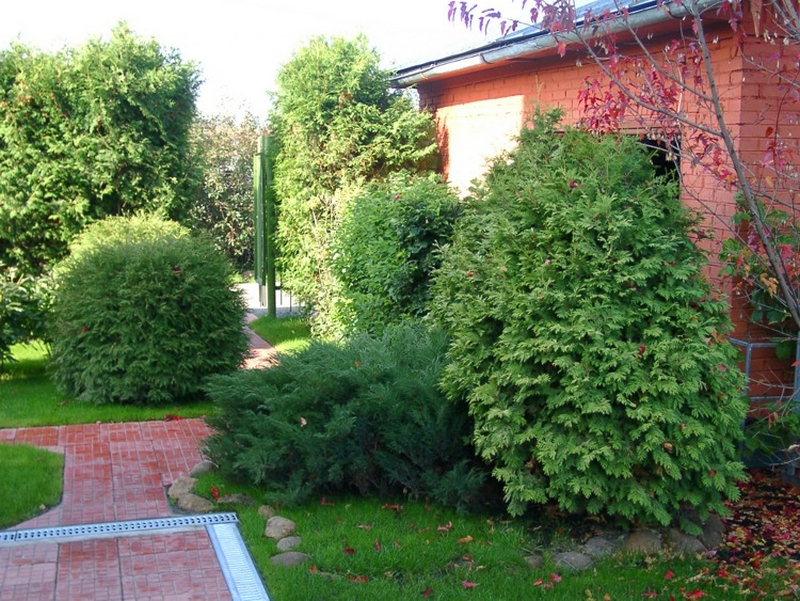
![]()

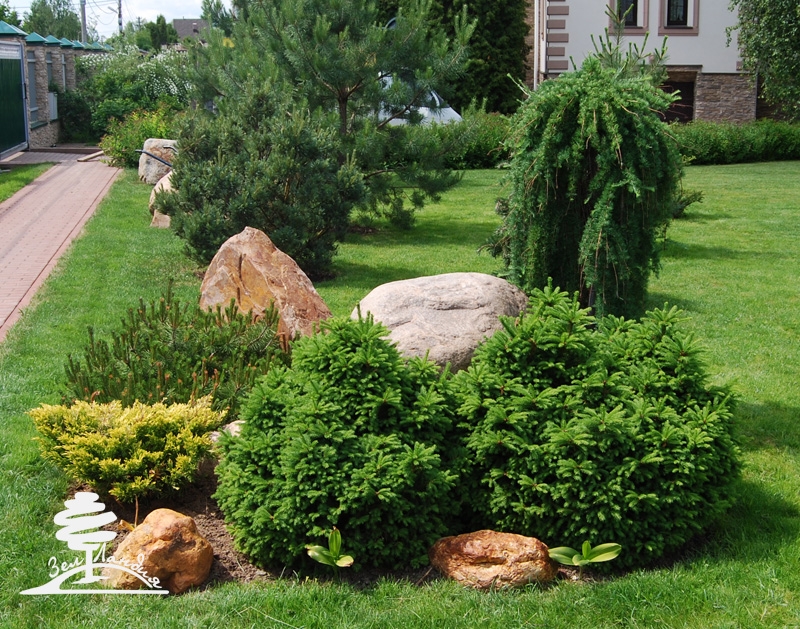
Ornamental coniferous plants - planting, care and reproduction
How to plant conifers
Everything types of coniferous plants need their own individual care, but there are some requirements that suit all plants without exception. It is best to buy seedlings in a container, they always take root, and you can plant them at any time, even in summer. Seedlings with a lump also take root quickly. When planting and transplanting, try not to damage the clod of earth. It is important to know when to plant conifers. It is best to plant conifers in March and April, as well as in September. Tall conifers can be planted in winter.
The size of the planting hole is at least twice the size of the root system. A trench is being prepared for the hedge. Planting mix - earth, peat and sand. When planting, it is not necessary to deepen the root neck. Do not forget to water the plant after planting. For one tree you will need 25 liters of water, and for a bush - 12 liters.
Basic care for conifers
After planting, it is better to immediately mulch the soil. Sometimes gardeners mulch the ground with interesting materials, you can try using beautiful decorative stones. It all depends on the type of plant. Some conifers like slightly acidic soil, while others prefer neutral soil. Mulching with pine needles or wood chips will make the ground slightly acidic. Mountain pine and junipers love neutral soils.
Water your plants moderately. The soil should not be very dry, but excessive watering can adversely affect the plant. It is better to cover young trees with spruce branches for the winter, because they are afraid of sunburn. Canadian spruce Konik is recommended to cover even in adulthood.
Sometimes, conifers need to be fed, but they do not do this as often as with deciduous plants. In the first year, rootin and biostimulants are used.
How to treat conifers
Always carefully inspect your conifers. If the trees began to shed their needles, turned yellow, strange spots formed on the needles, then the plants must be urgently treated. There is only one help - this is the treatment with special preparations. The needles that have fallen near the tree are collected and burned.
How to process coniferous plants
You can use mycosan-B biofungicide to treat plants, this drug perfectly improves immunity. Florovit improves the appearance of the plant, you can use it after treatment. Another popular remedy is karbofos.
How conifers reproduce
You can propagate coniferous plants with seeds, but this method is not easy. You will have to sow conifer seeds and wait a long time for shoots, and then your tree or shrub will grow for a long time. The best way to propagate is layering and cuttings. Some gardeners recommend breaking off cuttings and not using a knife.

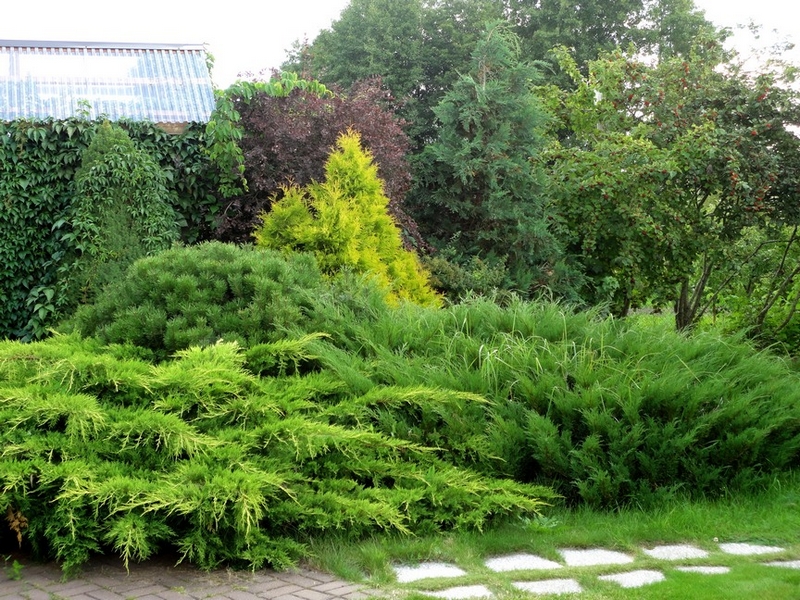
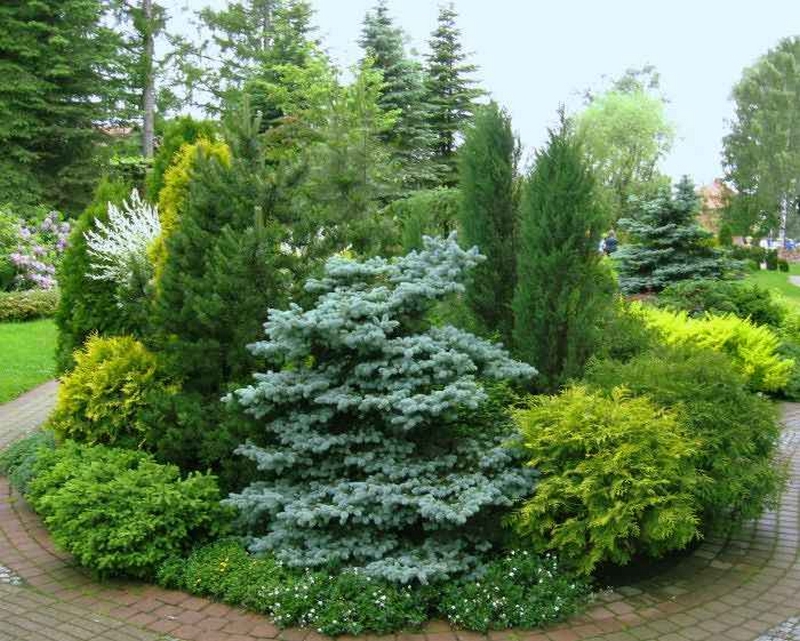

The use of coniferous trees in landscape design
The main advantage of coniferous trees and shrubs is that they do not shed their leaves for the winter. Even in the cold season, they look beautiful and decorative. Today there are many interesting plants. Ornamental junipers are popular. They can have green, blue, gray and golden needles. Dwarf conifers look very impressive in containers, in miniature compositions. Coniferous hedge replace the usual fence, protect the boundaries of the composition.
Popular Spruce Varieties
Landscape designers love the Canadian Konik spruce for its neat, cone-shaped crown. It looks interesting as a tapeworm, as well as in a group planting. Norway spruce Lucky Strike impresses with its bright red buds. Also, red cones are found in the Acrocona spruce. And the common spruce Inversa impresses with its unusual beauty, it seems that the shape of the plant is weeping. Prickly spruce Glauca Globosa has an unusual wide crown shape, grows slowly, suitable for small gardens, miniature compositions, alpine slides. Bialobok spruce has an unusual color of needles, young needles are light in color and look contrasting against the background of green needles. The needles of Canadian spruce Maigold are golden, in spring the tree looks very interesting and beautiful.
Beautiful varieties of pine and fir
Pine is a very functional plant, it purifies the air, the needles are used in cosmetology, the tree can be decorated for the New Year. Owners of private houses plant a spruce in the center of the composition; benches can be installed around it for relaxation. In winter, this beauty will delight you with her New Year's toys, and in summer - with green needles.
Pumilio pine is often used in design, it is a very compact plant with an unusual crown shape, it is usually larger in diameter than in height. At the age of 10 years, it can reach a height of up to half a meter. The mountain pine Zundert has bright yellow needles and can be a catchy accent in the garden. Weymouth pine can become a New Year's tree, its crown is cone-shaped, neat.
Fir trees also impress with their beauty. Some varieties are also decorated for the new year. Korean fir Molli boasts unusual buds with a blue tint. The Caucasian Pendula fir fascinates with its weeping crown, and the Golden Spreader fir stands out interestingly thanks to its golden needles.
Notice the yews. Most varieties lend themselves well to decorative shearing. From yew, you can make a circle, a square, as well as very complex figures in the form of animals, people, objects. Also, yew is an ideal hedge plant.
coniferous shrubs
Coniferous shrubs are an integral part of the composition. The most popular of them is juniper. It can be high or vice versa - creep along the ground. This plant should grow on every alpine hill and decorate compositions with conifers. Junipers can be golden, blue and green. Popular varieties are juniper rocky, horizontal, Cossack, medium, ordinary, scaly.
Coniferous trees and shrubs will become an indispensable decoration of your garden. If you do not have a large territory, then plant at least one decorative dwarf tree on your site.

